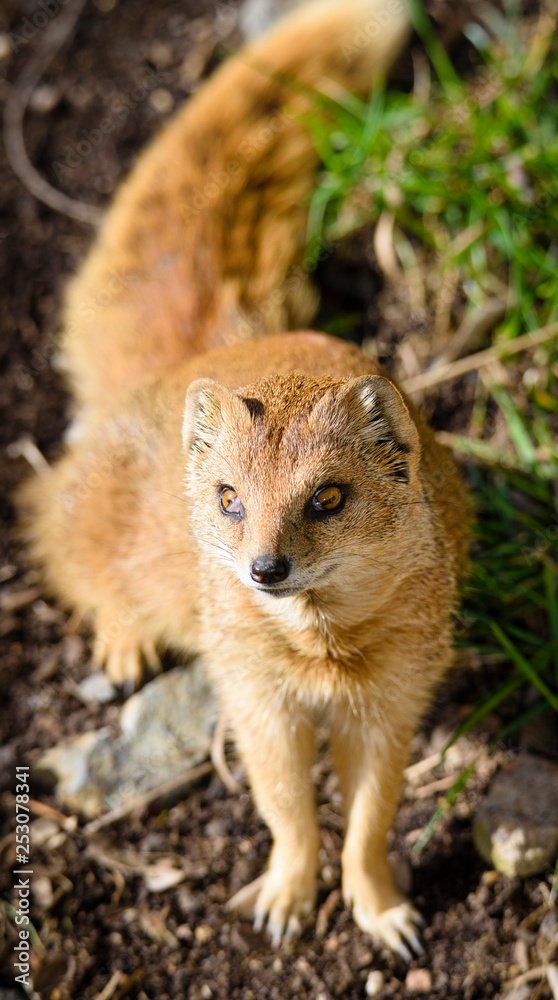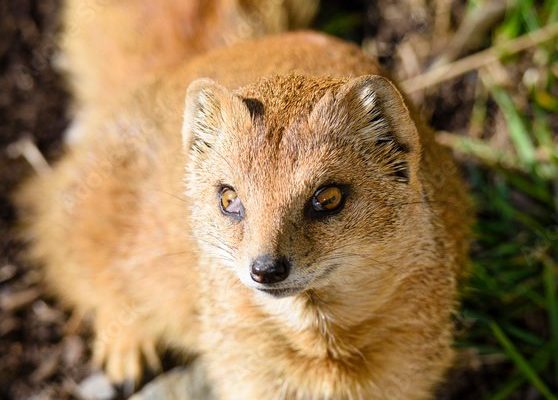
These creatures are not just your typical mammals; they have unique behaviors, habitats, and characteristics that set them apart. However, many people hold on to misconceptions about their lifestyle, diet, and social structure. In this article, we’ll unravel those myths and explore the fascinating truths about the yellow mongoose.
Myth
One common misconception is that the yellow mongoose is just another type of mongoose. Honestly, while they share some traits with their cousins, yellow mongooses have distinct features and behaviors that make them unique. They’re smaller than some of the larger mongoose species, typically weighing around 2 to 5 pounds. Their fur is a beautiful sandy yellow color with a hint of orange, which helps them blend into their surroundings in the arid grasslands of southern Africa.
If you think about it, it’s a bit like comparing a house cat to a lion. They’re both felines, but their size, behavior, and habitat are vastly different. Just like with cats, there are numerous species of mongooses, each with its unique characteristics. The yellow mongoose has adapted beautifully to its environment, making it a standout in the mongoose family.
Where Do Yellow Mongooses Live?
You might be wondering where you can find these creatures. Yellow mongooses primarily inhabit the dry regions of southern Africa. They thrive in ecosystems like savannas and scrublands, where they can dig burrows and find food easily. They prefer open spaces, which give them a strategic advantage when hunting for insects, small rodents, and even reptiles.
So, while they may look similar to other mongooses at first glance, their habitat and adaptations tell a different story.
Myth
Another myth is that yellow mongooses are solitary animals. Here’s the thing: they are actually quite social. They often live in small family groups called “clans,” which can consist of several individuals. These clans work together to defend their territory and raise young ones, similar to how some wolf packs function.
Imagine having a tight-knit group of friends who look out for each other—sharing food, protecting each other from predators, and playing together. That’s how yellow mongooses operate. They communicate through various sounds, like chirps and growls, to keep in touch with clan members. Their social structure is vital for their survival, especially in the wild.
Cooperative Care of Young
They also exhibit cooperative care of their young. After breeding, it’s common for siblings and other clan members to help care for the pups, teaching them essential survival skills. This teamwork strengthens clan bonds, ensuring that the next generation is well-prepared for life in the wild.
Myth
You might have heard that yellow mongooses are strict carnivores, solely feasting on meat. While they do enjoy a protein-packed diet, here’s the truth: they are actually omnivorous. Their meals consist of insects, small mammals, and birds, but they also nibble on fruits and plants when the opportunity arises.
Think of it like your favorite snack mix—while you might have a preference for chocolate, sometimes a handful of nuts or dried fruit hits the spot too. Yellow mongooses are opportunistic feeders, adapting their diet based on what’s available in their environment. This flexibility ensures they can thrive in their habitats, no matter the season.
Seasonal Diet Changes
In the rainy season, for instance, their diet may shift as insects become more plentiful. During the drier months, they might rely more on small rodents or even seeds and berries. This adaptability plays a crucial role in their survival, making them resourceful little creatures.
Myth
Another misconception is that yellow mongooses are all work and no play. But let me explain: these little guys love to engage in playful behavior. They often chase each other, wrestle, and roll around in the grass. It’s not just for fun; play helps them develop their hunting skills and strengthen social bonds.
Picture a group of children at the playground—laughing, running, and learning from each other. That’s the atmosphere yellow mongooses create in their clans. It’s vital for their growth and socialization, teaching them how to be effective hunters and clan members.
Importance of Play in Development
Play is especially crucial for young mongooses, who learn important skills that will help them as they grow. By engaging in playful activities, they not only have fun but also prepare for the challenges of adulthood in a competitive world.
Myth
You might have heard that yellow mongooses pose a danger to humans or domestic animals. This couldn’t be further from the truth. While they are wild animals with natural instincts, they are generally shy and avoid human interaction. Their first instinct is to flee rather than confront, making them more interested in keeping a low profile.
If you were to spot one in its natural habitat, you’d likely see it darting away at the first sign of human presence. They are not aggressive and have no desire to engage with humans unless they feel threatened. Think of them as the introverts of the animal kingdom—preferring to observe from a distance rather than be the center of attention.
Coexistence with Humans
In areas where humans and yellow mongooses coexist, it’s essential to respect their space. They play an important role in their ecosystem by controlling pest populations, which can be beneficial for farmers and gardeners. So instead of viewing them as a threat, it’s better to see them as helpful neighbors.
Final Thoughts on Yellow Mongooses
Understanding the yellow mongoose reveals just how fascinating these creatures are. They’re not just another type of mongoose, but rather unique and social animals that adapt well to their environment. By clearing up these common myths, we can appreciate their role in nature and the complexity of their lives.
Next time you think of a yellow mongoose, remember that there’s more than meets the eye. These little animals teach us about adaptability, social living, and the importance of play in the animal kingdom. So, whether you’re a wildlife enthusiast or just curious, take a moment to learn more about these delightful creatures, and you might just find a new appreciation for them.

